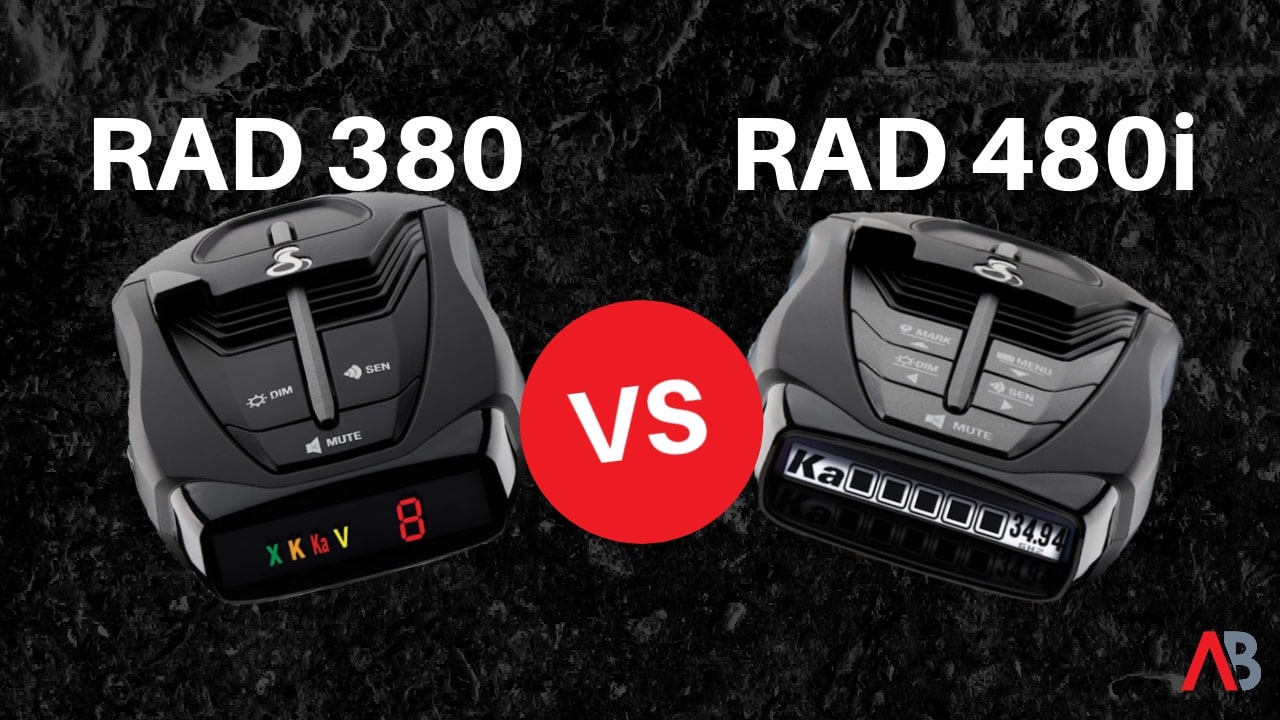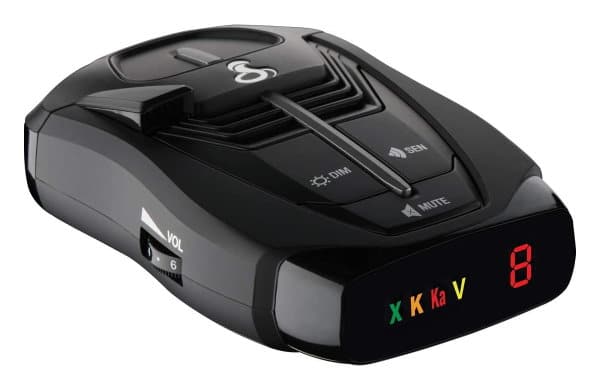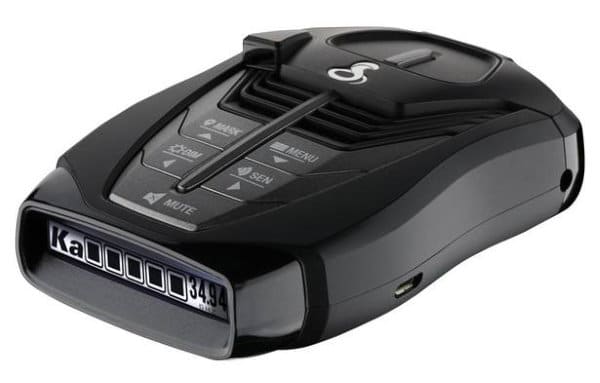Affiliate Disclosure: As an Amazon Associate, Automoblog earns from qualifying purchases, including the items featured below. The RAD 380 and 480i seen here were supplied to us by Cobra Electronics, an affiliate partner. Automoblog is a member of the Radar Detector and Countermeasures Forum to ensure truth and accountability when covering radar detectors. See our Privacy Policy to learn more.
Cobra RAD 380 vs. Cobra RAD 480i: Quick Take
We recommend the RAD 380 over the 480i. While the 480i offers Bluetooth connectivity via the iRadar app, it’s not as functional or user-friendly as something like Waze. In heavy traffic and on the highway, the RAD 380 performs better and issues fewer false alerts. When it comes to locking out false alerts, the RAD 480i can be a bit stubborn (if it locks them out at all).
As of this writing, the RAD 380 retails for $100 on Cobra’s official website, with the RAD 480i going for $150. Amazon has them listed at the same price (RAD 380 here and 488i here).
This Cobra RAD 380 vs. Cobra RAD 480i comparison guide will discuss the differences between these units and why the RAD 380 is the better choice.
Cobra RAD 380 In-Depth: What It Offers
Last summer, I spent three weeks driving with the Cobra RAD 380 across Michigan in two different vehicles (a small sedan and a larger SUV). Whether navigating the rugged industrial areas of Detroit or the more open expanses of I-94, the little RAD 380 was a great companion. It’s not a fancy radar detector, but it does the trick.
The RAD 380 comes with a 12V power cord, suction cup windshield mount, a hook-and-loop fastener for dashboard mounting, and a quick reference guide. A carrying case is not included.
Radar & Laser Protection
The RAD 380 detects all radar and laser (LiDAR) guns from both the front and the rear. A small plastic piece resides on the top left of the unit, shaped like something you might see in an algebra book. That triangular piece is Cobra’s proprietary LaserEye technology, which allows the 380 to detect signals from the front and rear. The RAD 480i has the same feature in the same spot.
Radar Alerts & Sensitivity Settings
The Cobra RAD 380 detects X, K, and Ka radar bands by flashing the appropriate letters on the display. A giant “L” appears when a laser signal is detected. The RAD 380 is also VG-2 capable, meaning it picks up the infamous “radar detector detector” signal. The factory setting for VG-2 is off, but you can turn it on. VG-2 is unlikely to be an issue as radar detector usage for your personal vehicle is legal in every state except Virginia and Washington D.C.
The RAD 380 has two sensitivity modes: City and Highway. City mode makes the RAD 380 less “sensitive.” Put another way, a radar detector’s City mode will make it less prone to false alerts. It’s especially helpful in urban areas where multiple X and K band signals are present (like automatic doors or traffic signage, for example).
Highway mode means a radar detector is at its most sensitive, making it more apt to alert on the wide-open road. This setting gives you the most possible time to respond to an alert while driving at higher speeds, but in lower-cost radar detectors, like the RAD 380 and 480i, it can cause false alerts. Based on my experience, the Cobra RAD 380 does a better job than the RAD 480i when filtering out false alerts, especially in highway mode.
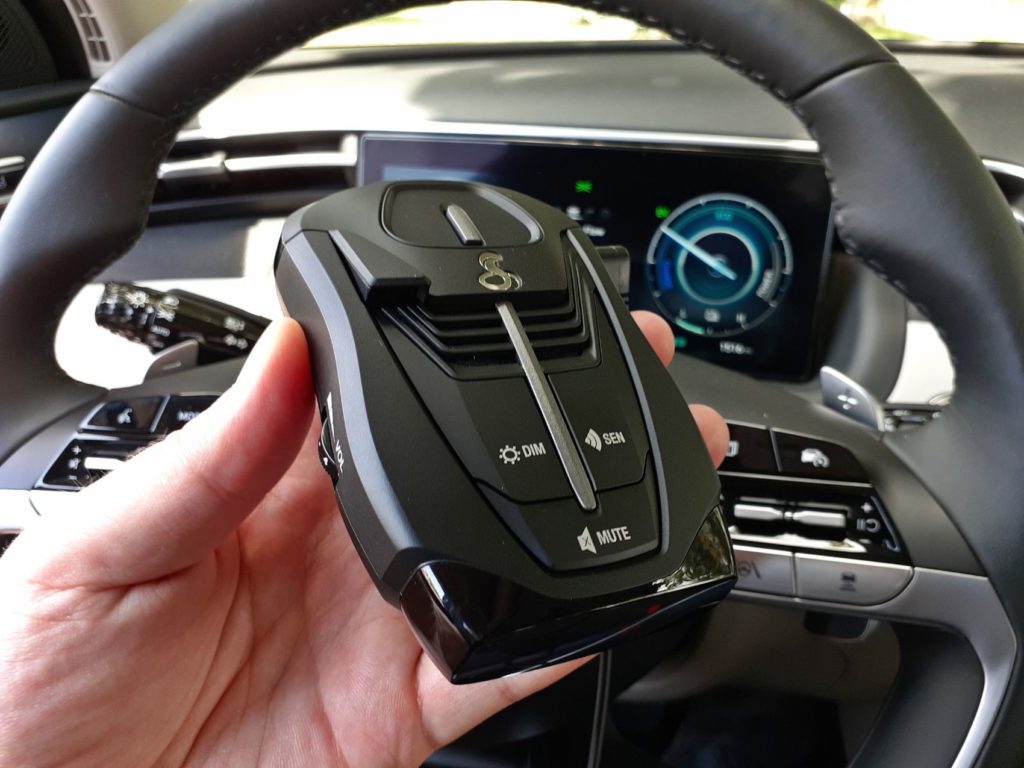
IVT Filter
Both the RAD 380 and 480i have an IVT filter. IVT stands for “Intelligent Vehicle Technology,” and it’s a common term you will see when shopping for a radar detector. IVT filters reduce false alerts caused by other vehicles with radar-based safety features, like adaptive cruise control and blind-spot monitoring.
Visual & Audible Alerts
The RAD 380 will advise you of a radar band’s signal strength via audible tones and a numeric signal meter on the display. Different alert tones correspond to the type of signal detected, including separate tones for laser signals. Visually on the display, the number 1 constitutes a weaker signal, while 5 is the strongest. The audible and visual alerts run in tandem. For example, if the RAD 380 is beeping rapidly, it’s most likely showing a 4 or 5 on the display. To save your ears (and sanity), the RAD 380 has an Auto Mute feature, which kicks in after the first few beeps.
Cobra RAD 380 Verdict
The RAD 380 is an affordable radar detector with a straightforward, no-frills design. The quick “plug and play” setup makes it a great choice if you only need a little something to help you avoid a ticket. There are no apps to worry about with the RAD 380 either, so you can use it without running down your phone battery. However, the limited feature set means the RAD 380 is probably not ideal for radar detector enthusiasts who want a more customized experience with their unit.
Let’s dive into the RAD 480i to see how it compares.
Cobra RAD 480i In-Depth: What It Offers
The Cobra RAD 480i comes with a 12V power cord, a suction cup windshield mount, a hook-and-loop fastener for dashboard mounting, and a quick reference guide. Like the RAD 380, the 480i does not come with a carrying case.
Radar Alerts
The Cobra RAD 480i detects X, K, and Ka radar bands, along with laser guns and VG-2. Like the RAD 380, the 480i issues a specific alert tone for each type of radar band it detects, increasing in intensity as you approach the source. However, rather than a numerical indicator like the RAD 380, the 480i uses illuminated squares to show how close the signal is. This is one of the fundamental differences between the RAD 380 and 480i.
Display Screen
The display screen of the 480i will show alerts according to the desired “detail mode.” These modes are accessed through a separate settings menu. In More Detail mode, the RAD 480i displays the detected band, signal strength, and frequency (pulse rate for lasers). Five squares represent the total signal strength. The more squares that appear on the display screen, the closer you are to the source of the radar.
You can simplify things via the Less Detail mode. Here, you will only receive three bars based on the intensity of the radar alert: one for low, two for medium, and three for high.
While the RAD 380 has color indicators, the RAD 480i uses a black-and-white combo for its display screen. It’s much nicer to look at and softer on the eyes, especially at night.
Sensitivity Modes
The RAD 480i offers two additional sensitivity modes compared to the RAD 380. The standard City and Highway modes are there, although Coba refers to them as Low and High on the 480i. The two extra sensitivity modes are Medium and Auto. They function like this:
- High: Zero filtering for maximum sensitivity (best for highway or open road driving).
- Medium: Minimal filtering to help reduce some unwanted alerts.
- Low: Maximum filtering to reduce unwanted and/or false alerts (best for city driving).
- Auto: When connected to the iRadar app, it adjusts sensitivity according to your current speed.
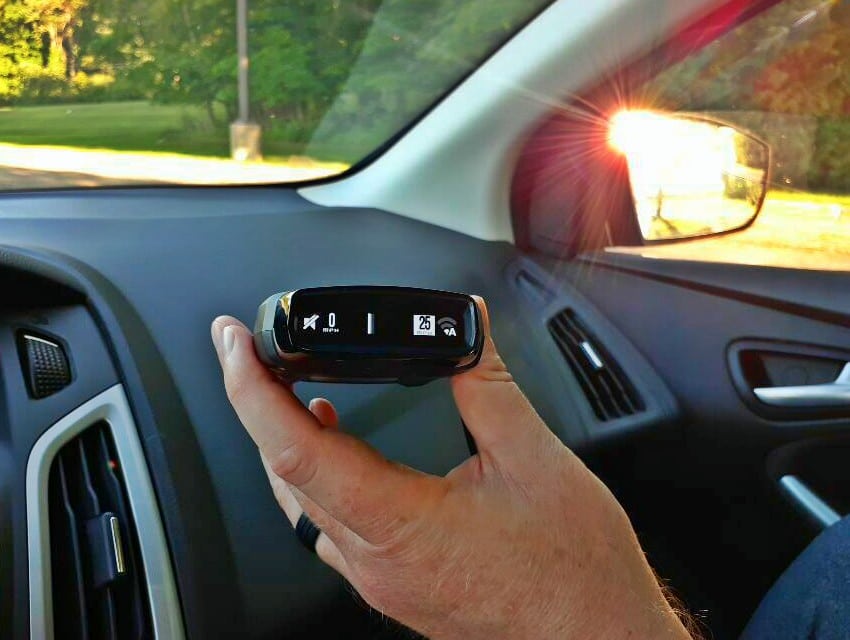
iRadar App
Unlike the RAD 380, the RAD 480i is compatible with Cobra’s Bluetooth-based iRadar app. With the iRadar app, you can either report or receive real-time alerts generated by a network of users. Common iRadar notifications include red light and speed camera locations, speed traps, and air patrols (I’ve received these warnings in Ohio).
Should you receive an alert while connected to the app, the type will show on the OLED display (like a red light camera or speed trap, for example). From there, a black warning bar serves as a “count down” of sorts, working from right to left. The closer the bar moves to the left, the closer you are to the user-generated iRadar alert.
Through the iRadar app, you can set over-speed reminders and manage different devices (other Cobra products are also compatible with the app). The iRadar app will take a toll on your phone battery, so have your charger handy for longer trips.
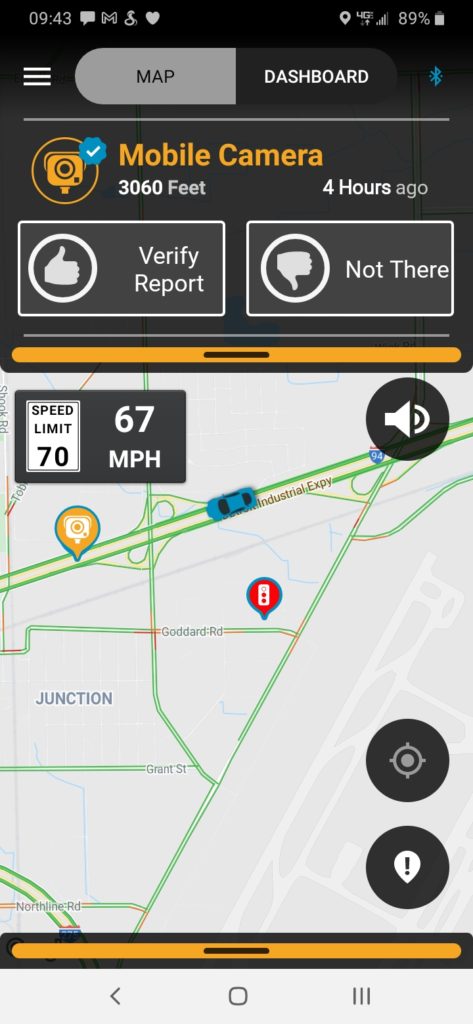
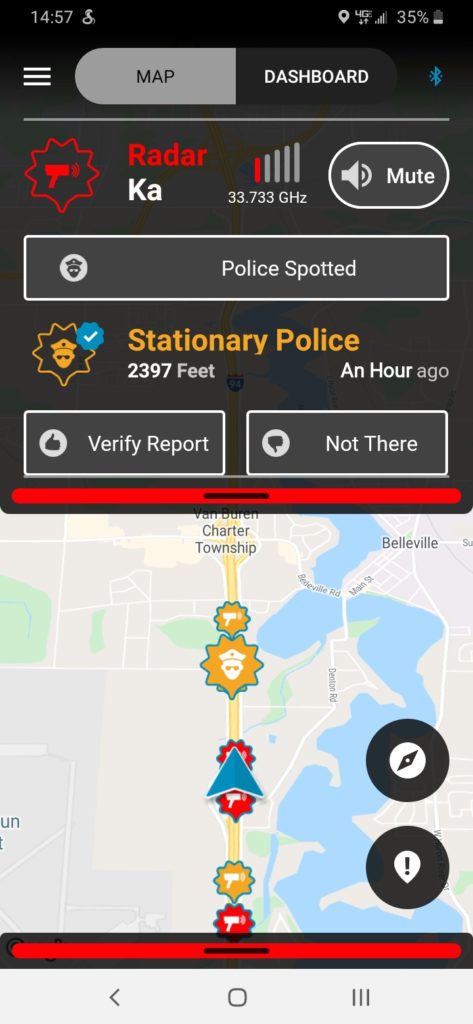
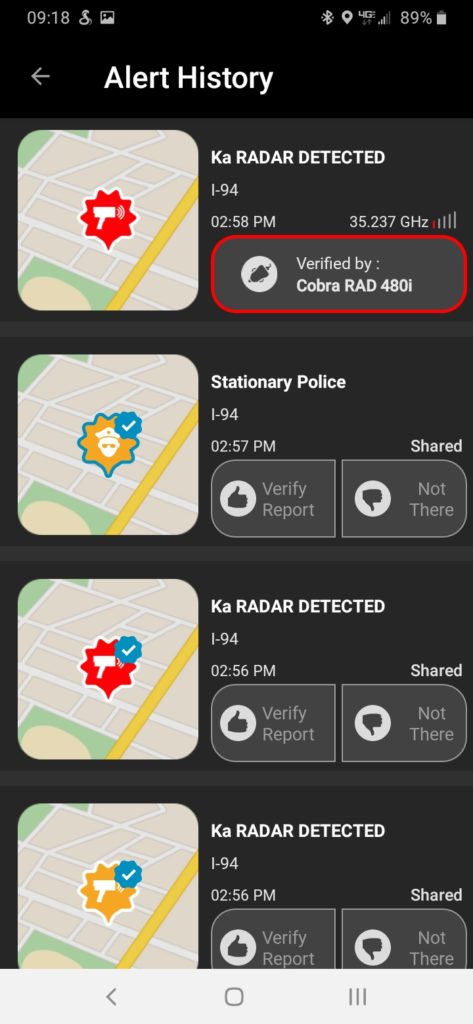
Do You Need The iRadar App?
If you frequently use Waze or Google Maps, the extra money you spend for the 480i may not be worth it. Although the iRadar app is crowdsourced, it’s not nearly as functional as Waze. There are substantially more users on Waze, so the real-time alerts are likely to be more effective and helpful overall versus what the iRadar app can provide. And since Waze can alert you to speed traps, you might be better off saving the money and going with the RAD 380.
If you live in a rural area, there are likely fewer users on the iRadar app reporting the location of different radar bands, traffic cameras, and speed traps. In the Iowa farming community where I grew up, everybody already knew the “hot spots,” which haven’t changed in 30 years. The local police officers still sit out by the baseball fields and in the Bomgaars parking lot to catch people coming in off the highway a little too fast. If that’s the case where you live, the RAD 380 will do just fine. There is probably no need to rely on an app to tell you where a radar band might be coming from.
However, if you are a radar detector enthusiast, the iRadar app might be enjoyable. And there is value in the app if you live in a bigger city like I do here in Detroit. Around here, there are plenty of users reporting where radar signals are located via the app, which can be helpful during high-traffic times.
RAD 480i Mark Location Feature
Like the iRadar app, the Mark button on the 480i helps justify the extra $50. Regardless of the model, radar detectors with “Mark Location” capabilities can lock out any reoccurring false alerts by pressing a button on the unit, hence the term “mark.” For example, if you know an area that repeatedly gives off a false alert, you can “mark” it and then “lock it out” so it does not bother you again. With the Cobra RAD 480i, you can either press the Mark button on the unit or tap a separate button on your phone when connected to the iRadar app.
The trouble for me was getting the Mark feature to work on RAD 480i. As a specific example, the gallery below includes three photos of the John C. Lodge Service Drive in Detroit, a one-way street that runs north and south above the faster-moving M-10. The first photo is an aerial shot from Google Maps, with the red arrows representing where two different digital speed limit signs are located (approximately). The other two photos, also from Google Maps, show the signs up close.
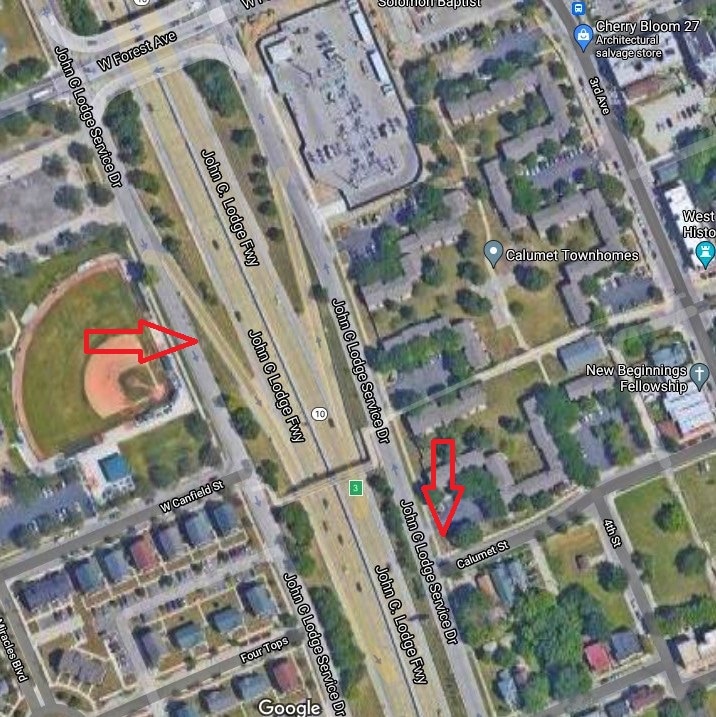
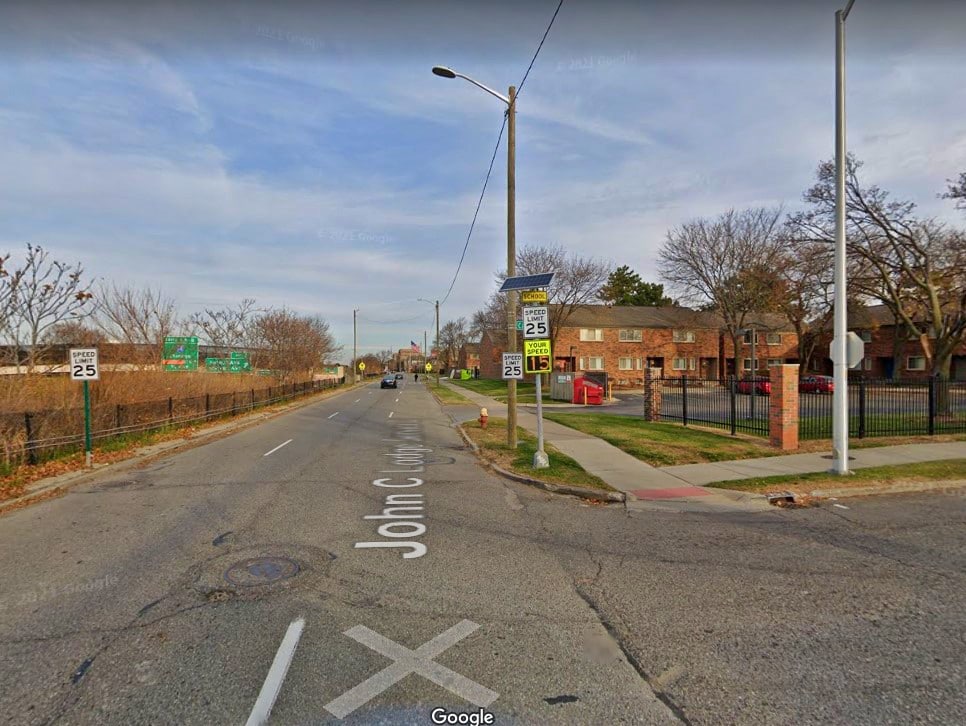
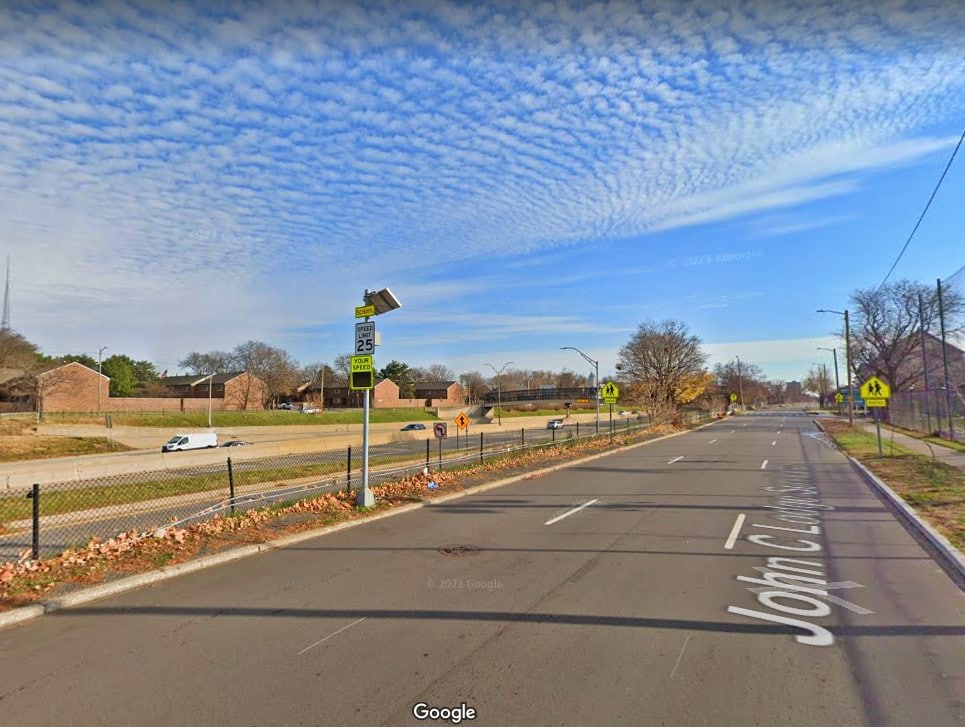
In this area, you can turn a perpetual circle on John C. Lodge if you drive up to Forest Avenue, then back down to Martin Luther King Jr. Boulevard. By doing so, you will encounter both the digital speed limit signs in the photo gallery above. I lost count of how many loops I did trying to get the Cobra RAD 480i to mark and lockout both of these signs. I believe it took about five or six passes to get the northbound sign to lockout and roughly eight or nine for the southbound sign.
Incidentally, I had the same issue, in the same area, with the Cobra Road Scout. Both experiences lead me to believe the iRadar app is marginal at best when locking out false alerts.
Cobra RAD 480i Verdict
Like the RAD 380, I spent several weeks last summer driving with the RAD 480i. I detail this further in a YouTube video and in my written review of the RAD 480i, but it takes some patience to run this radar detector full-time. The 480i struggles with false alerts, especially in road construction zones with digital signage. If you are between the Cobra RAD 380 and the 480i, save the $50 and go with the RAD 380.
As of this writing, the RAD 380 retails for $100 on Cobra’s official website. If you still want to give the 480i a shot, it’s also available via Cobra’s website. Amazon has them listed at the same price (RAD 380 here and 488i here).
Other Affordable Radar Detectors
Although the RAD 380 and 480i are more affordable than most radar detectors, they are limited in their overall capability. When it comes to more affordable radar detectors, the Uniden R3 is our ideal choice. While the R3 is roughly double the price of the 480i, it’s also twice the radar detector (without getting into the $500 and $600 range). The R3 tops the RAD 380 and 480i in long-range detection, false alert filtering, and customization options.
Carl Anthony is the Managing Editor of Automoblog and the host of AutoVision News Radio and AutoSens Insights. He is a Midwest Automotive Media Association member and on the board of directors for the Ally Jolie Baldwin Foundation. Like many Detroiters, Carl is holding out for a Lions Super Bowl win.

